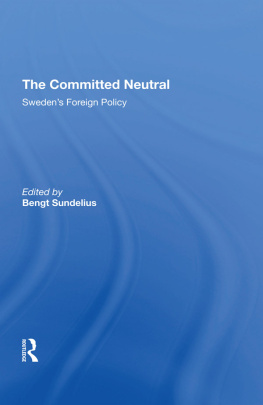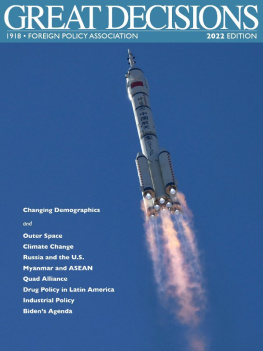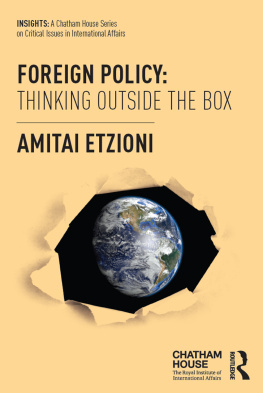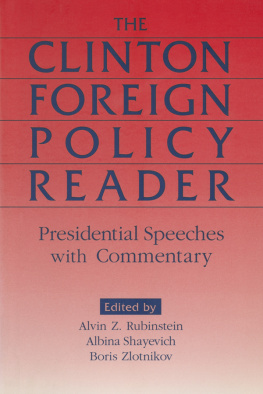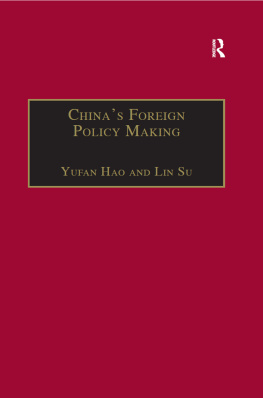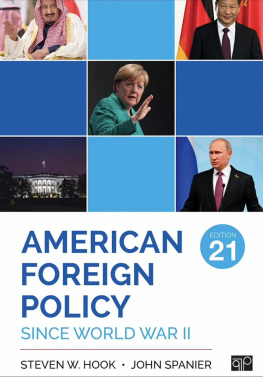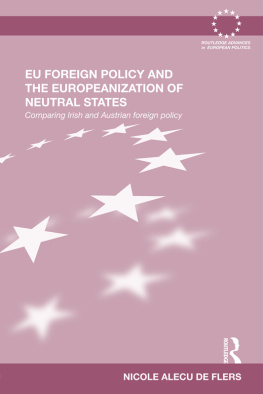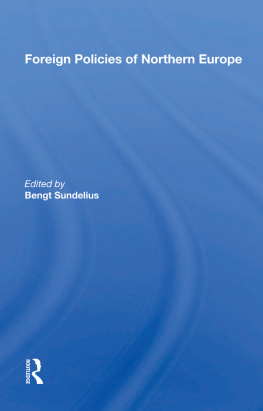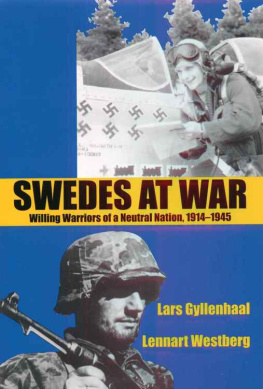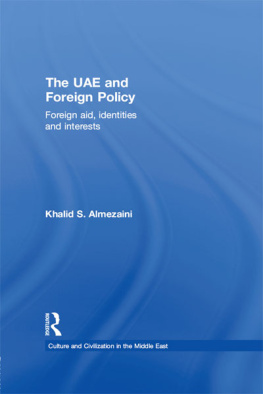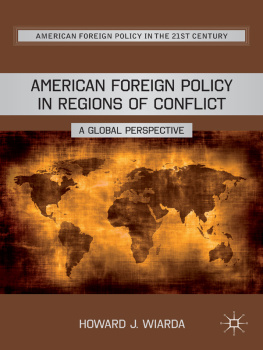The Committed Neutral
Published in cooperation with The Swedish Institute of International Affairs, Stockholm
First published 1989 by Westview Press
Published 2019 by Routledge
52 Vanderbilt Avenue, New York, NY 10017
2 Park Square, Milton Park, Abingdon, Oxon OX14 4RN
Routledge is an imprint of the Taylor & Francis Group, an informa business
Copyright 1989 Taylor & Francis
All rights reserved. No part of this book may be reprinted or reproduced or utilised in any form or by any electronic, mechanical, or other means, now known or hereafter invented, including photocopying and recording, or in any information storage or retrieval system, without permission in writing from the publishers.
Notice:
Product or corporate names may be trademarks or registered trademarks, and are used only for identification and explanation without intent to infringe.
Library of Congress Cataloging-in-Publication Data
The Committed neutral.
(Westview special studies in international relations)
Published in cooperation with the Swedish Institute
of International Affairs, Stockholm.
Includes bibliographical references.
1. SwedenForeign relations. I. Sundelius, Bengt.
II. Utrikespolitiska institutet (Sweden). III. Series.
DL860.C56 1989 327.485 89-25067
ISBN 13: 978-0-367-29094-8 (hbk)
Contents
, Bengt Sundelius
, Sverker strm
, John Logue
, Joseph Kruzel
, Ebba Dohltnan
, Susan L. Holmberg
, Mikael S. Steene
, Don Odom
As with most academic works, this volume is the result of collaboration among many individuals. The Committed Neutral was launched as part of the New Sweden 88 campaign while I was still associated with the University of Washington. It was hoped that this project would result in one of the more enduring and concrete results from that massive information effort. The Swedish Institute granted the necessary funding. Ove Svensson and Christina Engfeldt provided valuable support throughout the project. Neither theynor anyone else at the Swedish Instituteinterfered with either the content or academic purpose of the project in any respect. Instead, they offered helpful assistance whenever it was requested. Bo Huldt of the Swedish Institute of International Affairs facilitated the project during its early phases. The volume is now published under the auspices of his institute.
The manifold contributions by Don Odom are gratefully recognized. The definition of his responsibilities as project assistant was stretched beyond any reasonable limits during our many Sunday afternoons in the questionable company of the preliminary drafts. Don prepared (coded and edited) the entire book and compiled the For Further Reading section of the book. If the book in front of you reads at all well, then it is the result of Dons careful and diligent polishing.
My most important lesson from this project is that commitment begins at home. Even more than before, I have come to admire the quietly practiced commitment that Julie personifies. To know her is to experience commitment.
Benjft Sundelius
Note
To commemorate the 350th anniversary of the first Swedish (and Finnish) settlers in the United States (the New Sweden Colony located in the area that is now Delaware), a massive celebration New Sweden 16381988 was held in both countries throughout 1988. It included royal visits to the United States, a week of on-location coverage in Stockholm by the hosts of ABC televisions Good Morning America , numerous museum exhibits, concerts, cultural exchanges, and countless workshops and lectures at American colleges and research centers. Although it is still too early to assess its lasting impact, the celebration certainly succeeded in highlighting many aspects of the kinship between the United States and Sweden.
1
Committing Neutrality in an Antagonistic World
Bengt Sundelius
The contemporary European security context can be defined in terms of two opposing alliances that seek to avoid a military confrontation through determined efforts to prepare for just such a situation. In this setting of allies concerned with coalition management and bloc balancing, a European neutral stands out as a deviant case. It is not easily integrated into the bloc perpectives of the two alliance leaders. The neutrals position can be misunderstood by either side as serving the strategic interests of the opposing side. For much of the postwar period, the United States remained skeptical concerning the efficacy of neutrality as a policy choice. As the postwar record shows, however, the United States was not alone in these misgivings.
For the United States neutrality represented not only a discredited past and an undesired feature of the European system erected after the war but also an unhealthy sign of the potential future of that system. The Soviet Union was not much in disagreement with the United States about the past or the present of European neutrality, particularly as some of the defectors from the ranks of the WTO showed inclinations in that direction (Albrecht, Auffermann and Joenniemi, 1988:11).
Standing alone, a neutral state finds itself frequently forced to explain and defend its record. This is part of the never ending determination to build confidenceboth at home and abroadin its chosen position. In times of East-West tension, such as during most of the 1980s, this need to profess ones innocence becomes the daily task for the representatives of a European neutral. Many illustrations of this limited appreciation for neutrality among world leaders, as well as among the publics at large, can be given. In a 1976 dinner speech, Henry Kissinger expressed this sentiment well. He is quoted as having addressed his Swedish host as follows: I think we can also agree that the neutrality of some is made possible by the commitment of others (Pers, 1987:91). This skeptical view of neutrality is not a novel phenomena linked to the contemporary East-West divide in world politics. According to one student of neutrality, Efraim Karsh, for a long time the general attitude towards the neutral state was one of intolerance and principled reluctance to recognize neutrality as a legitimate political option (1988:14). To commit neutrality in an antagonistic world is not usually a popular policy choice with the combatants.
In this volume, five U.S. scholars give the reader the benefit of their outside perspectives concerning different facets of Swedish foreign relations. Through this mirror of U.S. interpretations of our reality, we can gain new insights into a subject that may be so mundane and familiar that its essence has been lost. To accentuate any discrepancies between these outside views and our self-image, the book begins with an essay by the distinguished Swedish diplomat Sverker strm. In his chapter, the reader gets perhaps as close a reading as is possible (with the exception of official and often sterile policy declarations) of how the Swedish foreign policy establishment prefers to portray its position in world affairs. This chapter reveals as much from what is omitted or downplayed as from what is highlighted.
The extent to which the preferred Swedish image has penetrated U.S. scholarship can be noted in the writings of the other contributors and, especially, in the final chapter by Mikael Steene. Steene surveys the shifting views of Swedish foreign policy among prominent U.S. specialists as reflected in their writings over a period of seven decades (19291987). Certainly, the combination of perspectives chosen for this volume may be useful to students abroad who want to learn about our foreign policy. In addition, the material should be examined by the many Swedes who are trying to understand the seemingly contradictory elements of their committed neutral.

